The story begins with a pale vintage photograph of a sleek, modest looking car with light golden paint casually parked on a street in front of a beige stone wall. “I first saw this picture many years ago, and I never really got it out of my head”, says Adrian van Hooydonk, BMW Group’s Head of Design. “The car looked like something from the past, but I still found it surprisingly modern.” As it turned out after some initial research, the mystery car in the picture was the BMW Garmisch, a prototype developed by the Bertone studio in Turin as an independent design proposal. This was a common practice for automotive design consultancies at the time to showcase their creativity and avant-garde ideas to the big car manufacturers. The BMW Garmisch was unveiled at the Geneva Motor Show in the spring of 1970. Shortly after, its traces vanished, leaving nothing behind but a handful of drawings and images in the Bertone archive.
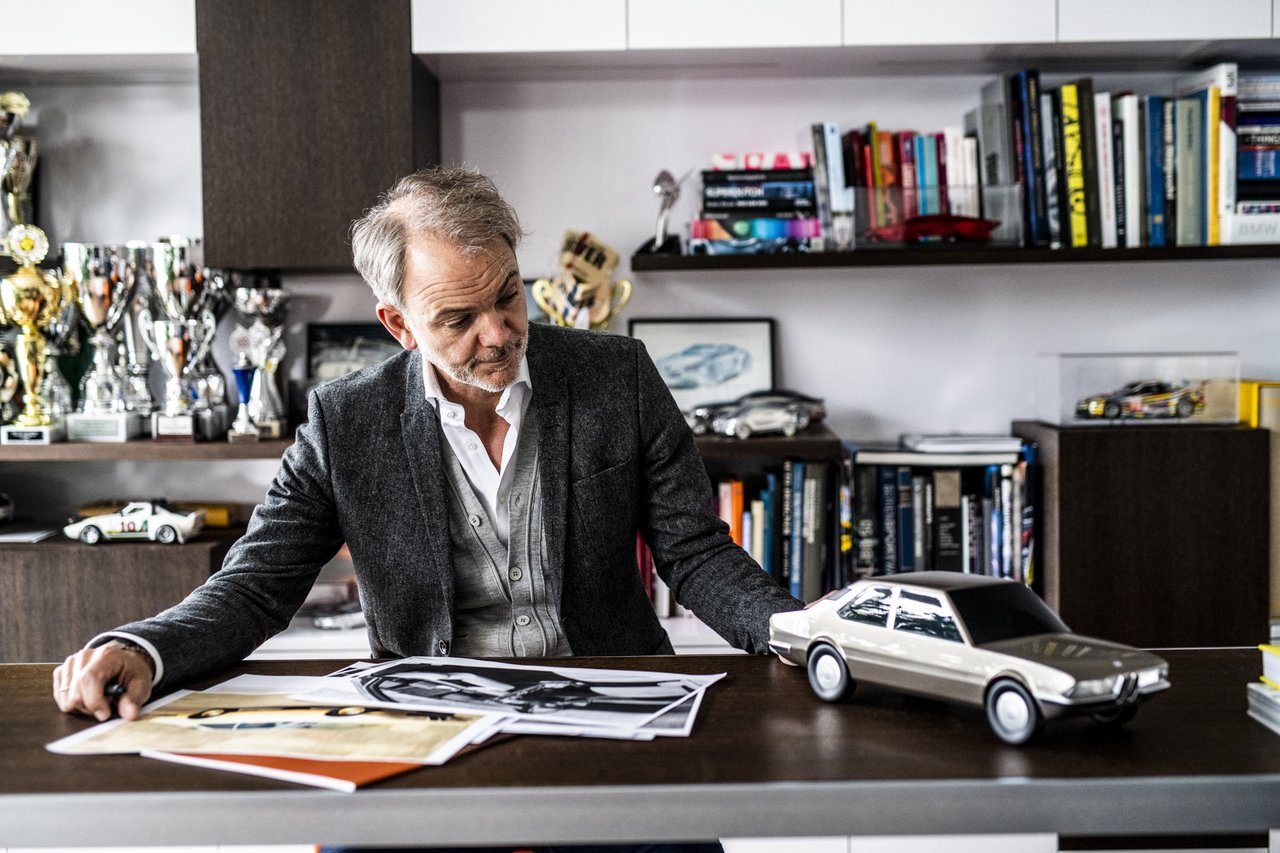
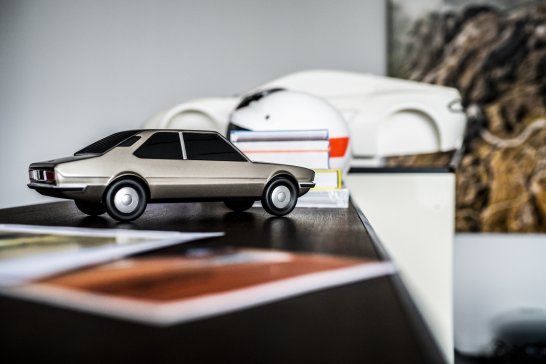
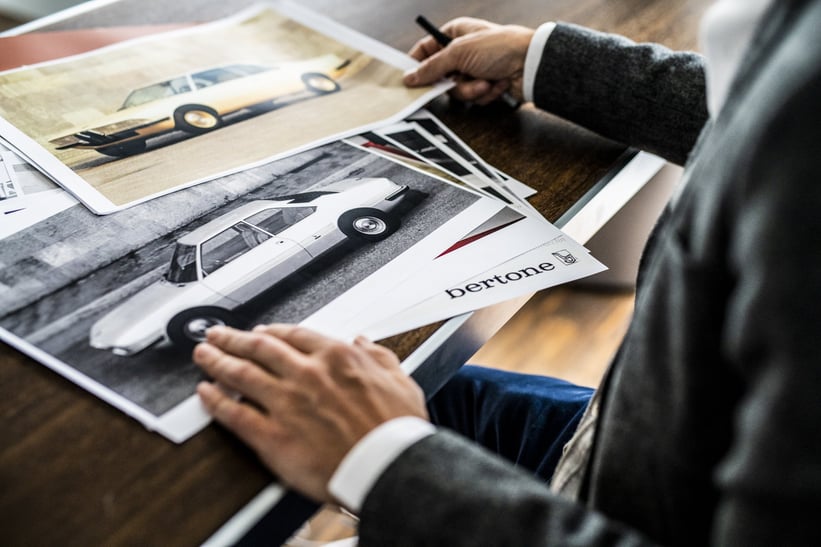
The stylist responsible for the BMW Garmisch was Marcello Gandini – indisputably one of the most influential automotive designers of the 20th century. During his 15 years as the Design Director of the Bertone Stile studios in Turin, he created some of the most daring and revolutionary vehicles of the era, including wedge-shaped concept cars such as the Lancia Stratos Zero as well as iconic sports cars including the Lamborghini Miura and Countach. “Marcello Gandini is to me one of the grandmasters of car design”, says Adrian van Hooydonk. “The cars he created fascinated me as a child and sparked my interested in automotive design.”
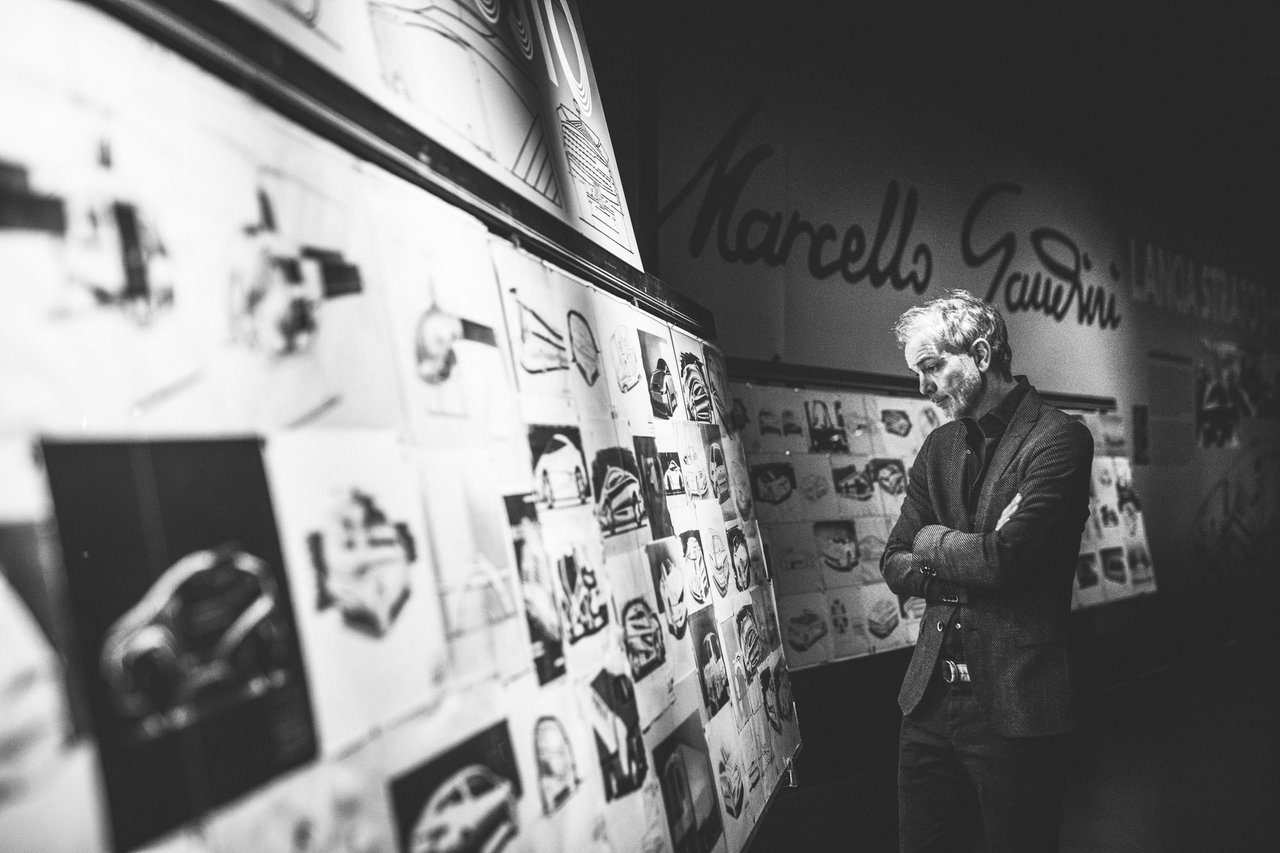
But while the dramatic concept and sports cars Marcello Gandini created on his drawing board in the 1960s and 1970s are now sought-after by collectors and celebrated at concours events worldwide, his stylistic influence on the BMW brand is less well documented. “The BMW Garmisch very much encapsulates the design of Bertone during that era and certainly also Marcello Gandini’s view on BMW at the time”, explains Adrian van Hooydonk. “This is why I became intrigued by the idea of reviving the car – to pay tribute to Mr. Gandini as an outstanding designer and to close the gap in BMW’s history.”
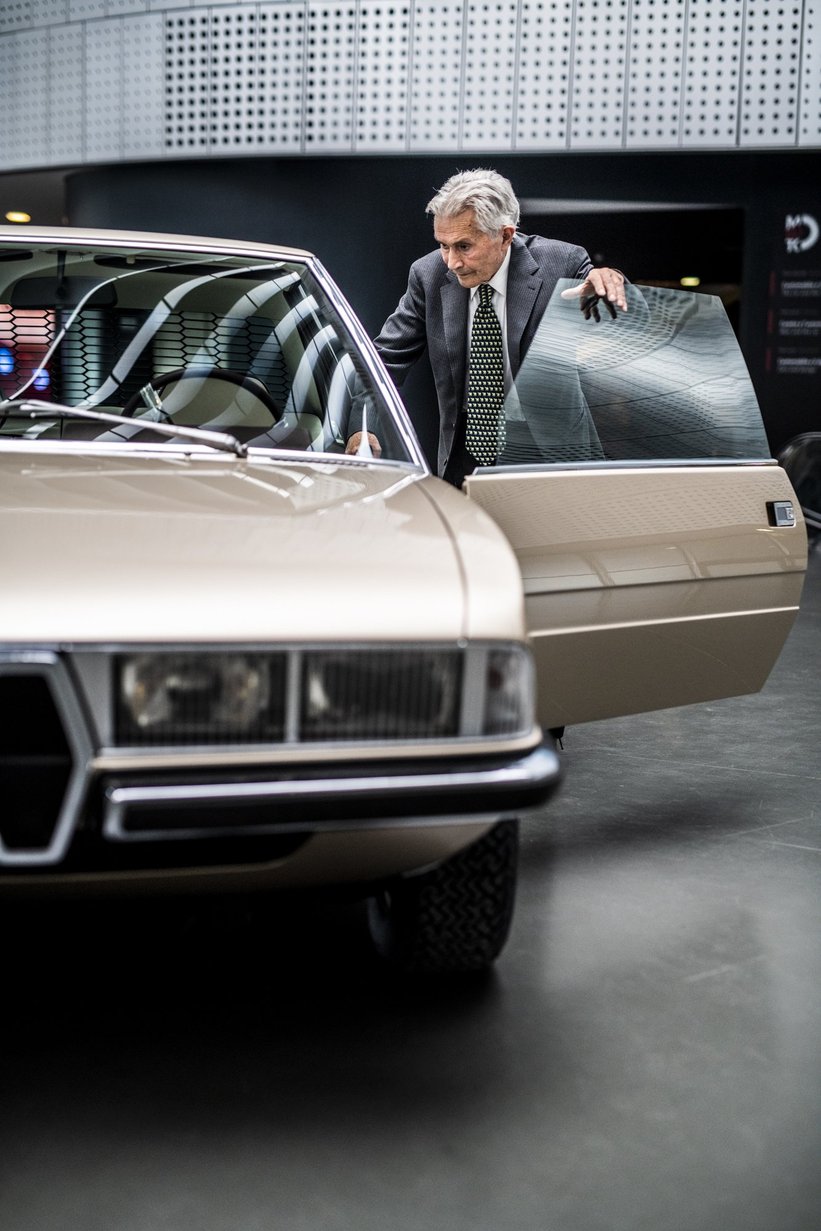
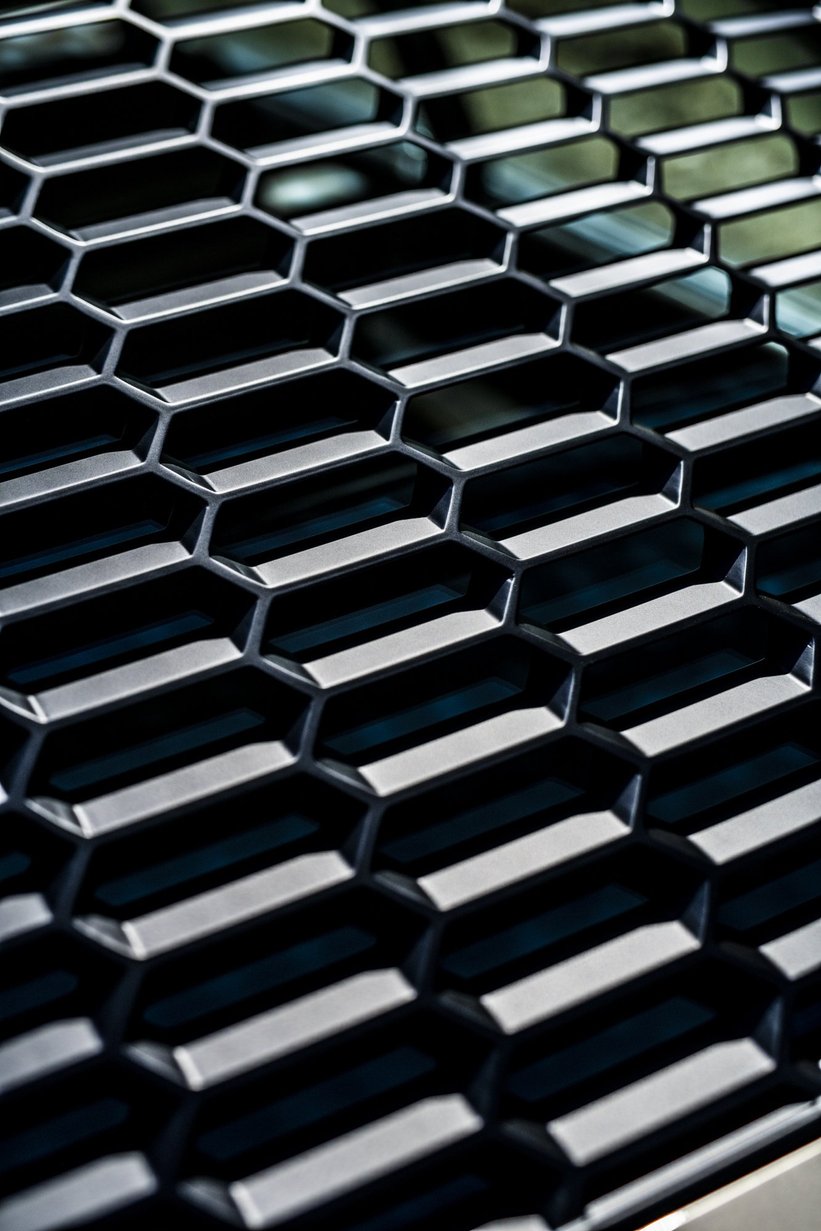
Since the early days of the company, BMW has cultivated close relationships with many leading Italian coachbuilders and design houses. In the late 1930s, the Milan-based Carrozzeria Touring created the BMW 328 Mille Miglia, a highly successful and alluringly beautiful lightweight aluminium racecar. During the economic boom of the 1950s and 1960s, Giovanni Michelotti shaped the BMW 700 and the ‘Neue Klasse’, most notably the iconic BMW 2002. In the late 1970s, Giorgetto Giugiaro designed the angular glass-fibre body of the BMW M1, creating one of the most impressive showcases for the fusion of German motorsport engineering and Italian design. But while BMW held close relationships with independent Italian design consultancies for many decades, certainly not every idea from Milan and Turin turned into a production car. Sometimes it was just a new line, a different proportion, or a distinct detail that found its way into BMW’s design language.



In the case of Bertone, the studio had already built a relationship with Munich during the development of the BMW 3200 CS, which was created under the supervision of BMW’s influential head of design Wilhelm Hofmeister in the early 1960s. When Marcello Gandini joined the studio in 1965, Bertone worked on proposals for a new four-door model for BMW – a project that would later influence the first BMW 5 Series. After Bertone had shown the BMW 2800 Spicup – a flamboyant all-green roadster concept inspired by the BMW 507 – at the Geneva Motor Show in 1969, the design team considered a more subtle approach for the next year’s exhibition.

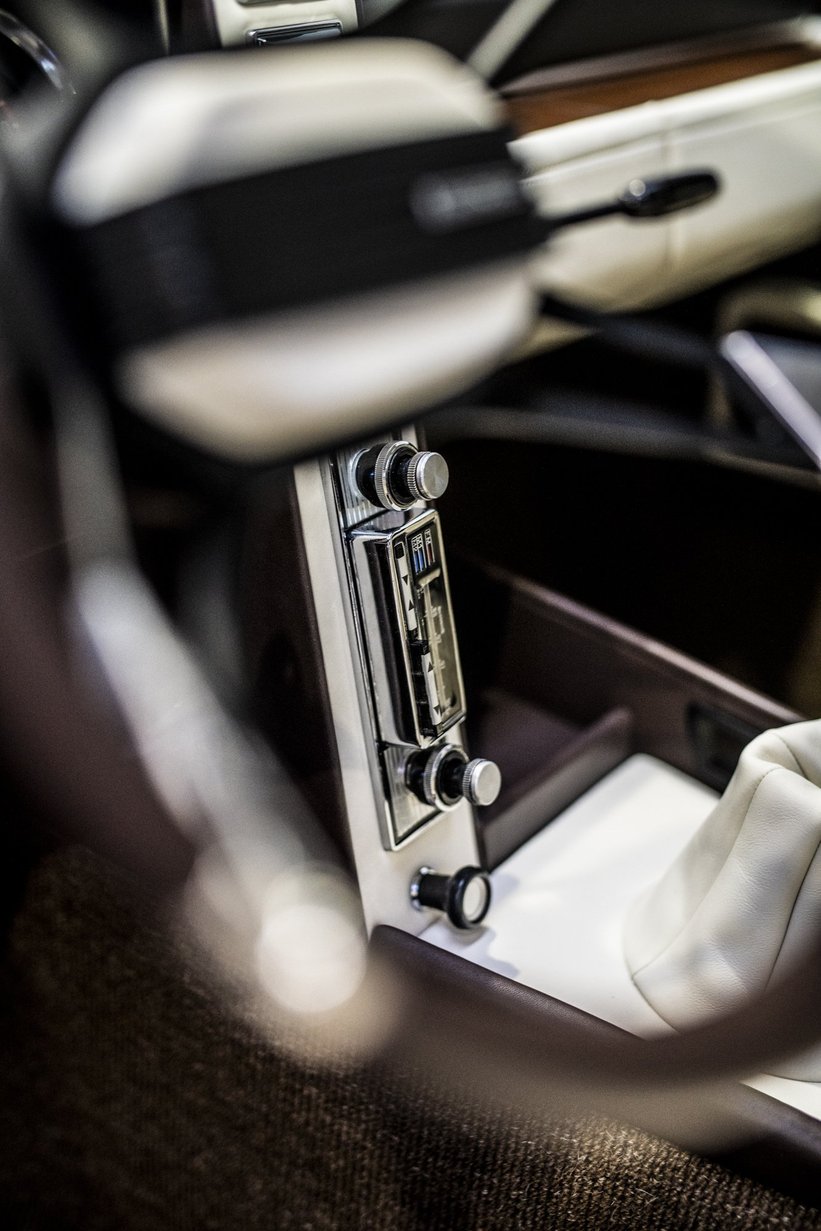
“The original idea for the BMW Garmisch came from Nuccio Bertone himself, who wanted to consolidate his existing relationship with BMW by designing a surprise show car for the Geneva Motor Show”, remembers Marcello Gandini, who was in charge of Bertone’s design department at the time and recently celebrated his 80th birthday. “We wanted to create a modern mid-sized coupe that was faithful to BMW’s design language, but that was also more futuristic and even a bit provocative.” In just four months, Marcello Gandini and his team rebuilt a BMW 2002 tii, changing the overall proportions to make the car look more contemporary and adding a series of design cues that were certain to raise BMW’s attention at the Geneva show. While the side profile of the car was very sleek and clean, the most distinctive design feature of the BMW Garmisch was its bold, vertical and almost angular variation of BMW’s kidney-shaped radiator grill. It was flanked by square glass-covered headlights that gave the car a very different look and presence.



To make the car stand out even more, Marcello Gandini added a pair of louvres on the C-pillars and a honeycomb mesh cover for the rear window – a trademark element of his style that can also be found on the outlandish Lamborghini Marzal concept car. “They wanted to see how far they could push the brand”, says Adrian van Hooydonk. “From Bertone’s perspective as a consultancy, this was necessary to raise BMW’s attention.”


Often in a rushed production process, when show cars are typically finished the night before their public premieres, little consideration was usually put into the interior. But in the case of the BMW Garmisch, Marcello Gandini luckily did not let the opportunity pass to give the cockpit his special treatment as well. On the center console, the designer placed a rather unusual vertical radio, while the passenger found a lavish oversized mirror when opening the glovebox. In addition to these little surprises, the design team chose a flamboyant mix of 1970s cream colors and en vogue materials, adding an elegant Piemontese twist to the rather functional interior design norms of the time.
Then, of course, there was the name. It was carefully chosen to lure both the trend-setting members of the Italian hautevolée and the Bavarian managers attending the Geneva show. “We picked the name Garmisch because skiing was very popular in Italy at that time”, remembers Marcello Gandini. “It evoked dreams of winter sports and alpine elegance. And, of course, Garmisch was close to Munich.”

While the appeal of Garmisch-Partenkirchen as a skiing destination for the jet set has faded since the 1970s, the BMW Garmisch and the creative vision behind it seem to have endured. “To me, Marcello Gandini’s designs have always been very clear and very clean, but also very dramatic”, says Adrian van Hooydonk. “This is why I find his work so inspiring. He was always able to create something spectacular while using very few design elements. And I see the same approach in this car.” In summer 2018, Adrian van Hooydonk visited Marcello Gandini at his house in Turin to find out more about the BMW Garmisch, get his approval for the recreation and ask him for his support. “Of course, we did not want to do this without Mr. Gandini. I told him about our idea to bring back the BMW Garmisch. He thought it was a little bit crazy, but he liked it.”
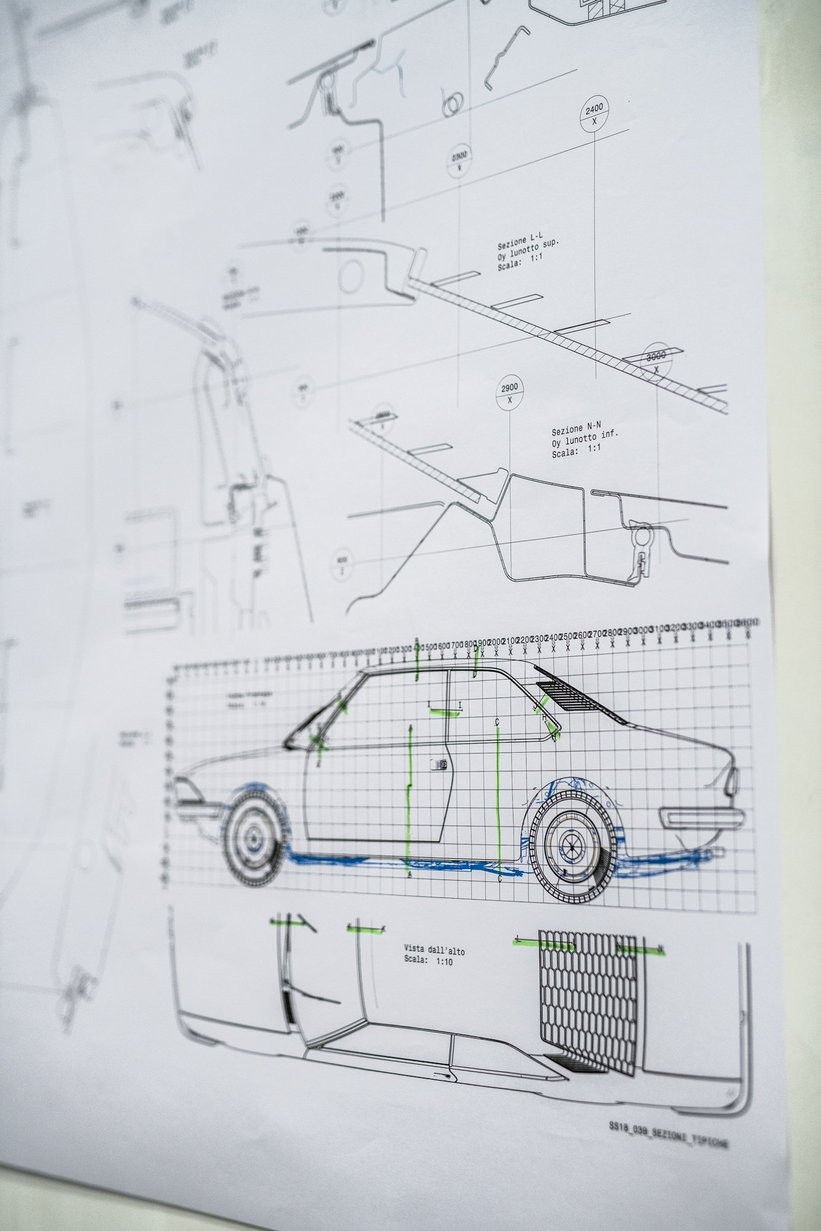

Back in Munich, Adrian van Hooydonk convoked a team of interdisciplinary specialists from the BMW Group Design and BMW Classic departments to start the research and production process. As original documents for the BMW Garmisch were sparse, the designers and historians had to retrace every detail of the car’s exterior and interior from a small selection of period images, most of them only available in black and white. Firstly, the car was recreated in 3D as a computer rendering. Then, a full-scale model was built to fine-tune the proportions and details.

Marcello Gandini himself contributed to the process by adding the missing pieces of the puzzle from his memory and allowing the design team to refabricate key details like the exterior colour – a light champagne metallic, in line with Italian fashion trends of the time – and the interior materials and trim. Finally, the BMW Garmisch was coach-built by skilled craftsmen in Turin – just like the original car almost 50 years ago.
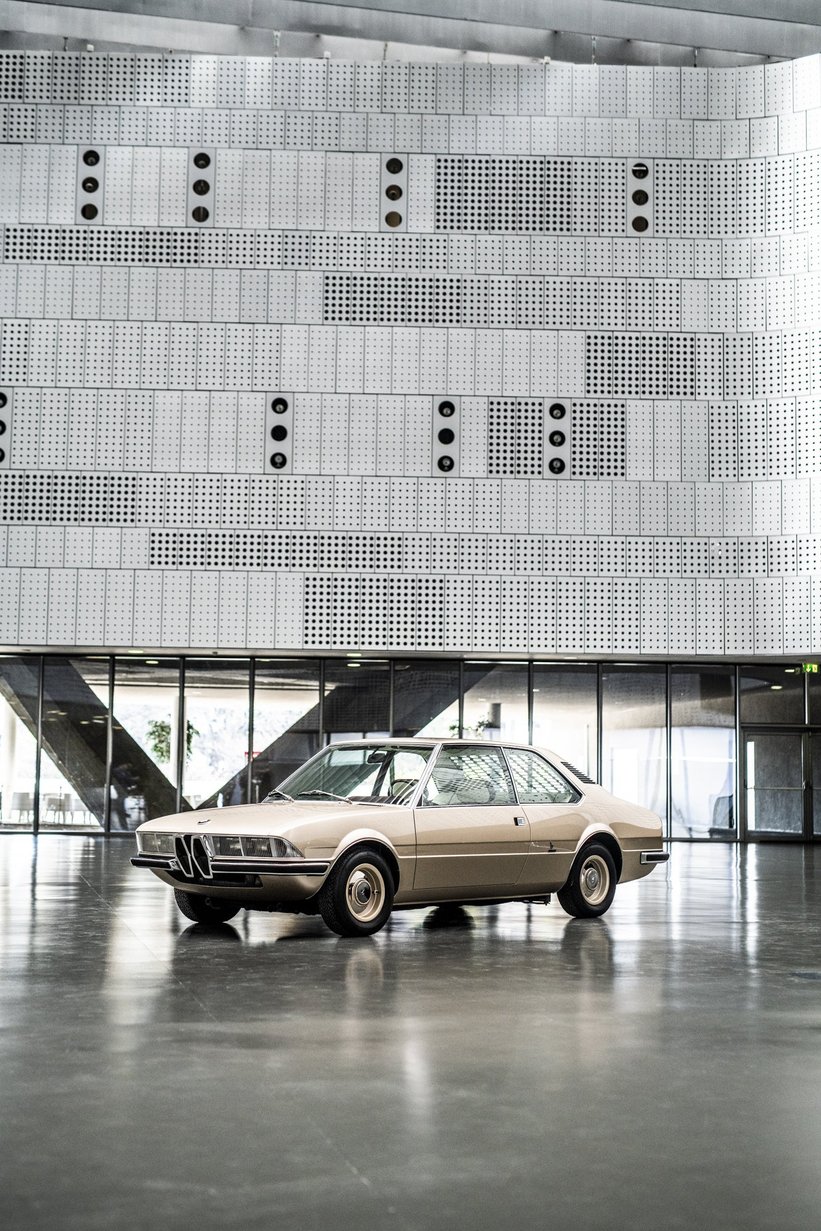

In March 2019, the finished and fully-functioning car was presented to Adrian van Hooydonk and Marcello Gandini at the Museo Nazionale dell'Automobile di Torino. “Seeing the car completed was quite special”, says Adrian van Hooydonk. “I am used to seeing new designs all the time. And all of a sudden, there I was in Turin seeing a car that I knew was brand new, but somehow came straight from the 1970s. I think for Marcello Gandini it was quite moving as well. He told me that he felt 25 years younger when he stood next to me. So, I took that as a compliment for the entire team that built this car.”
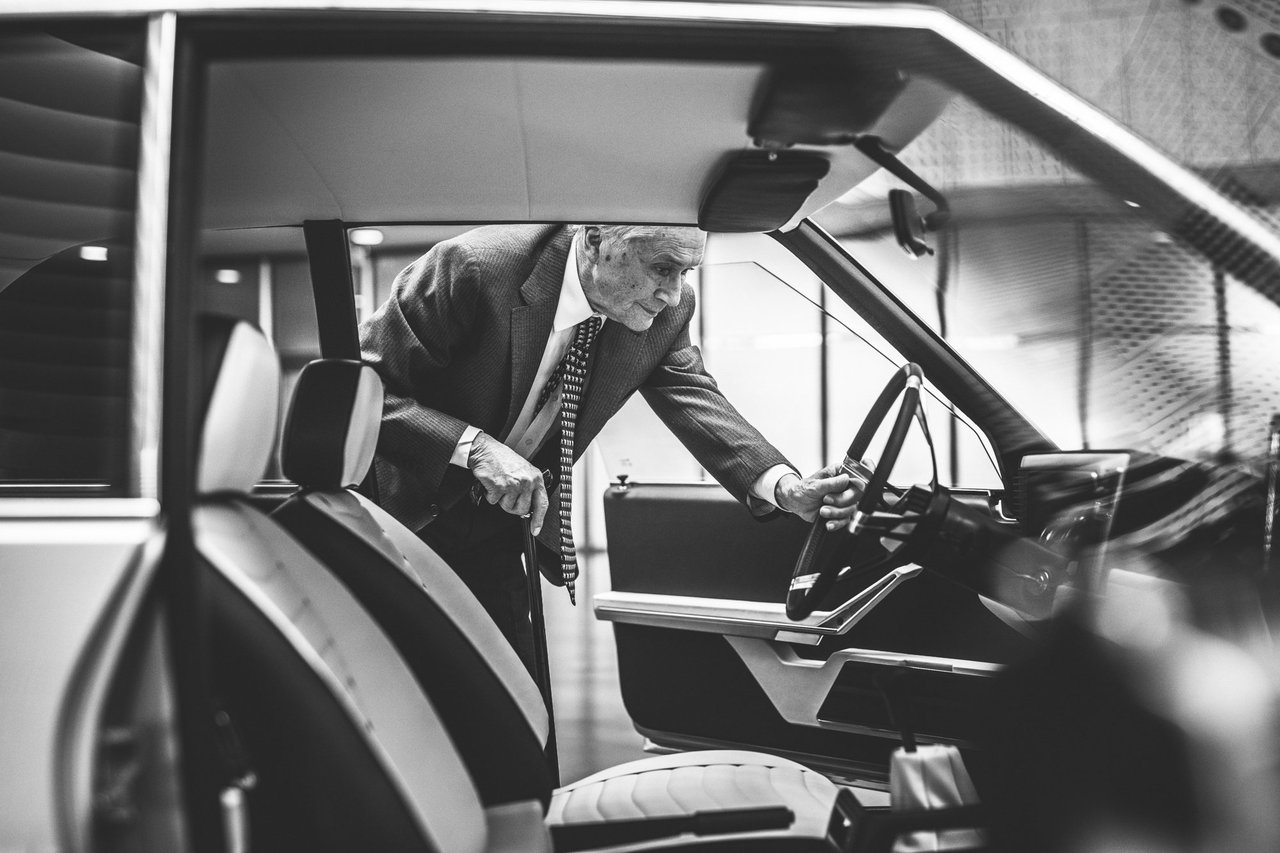
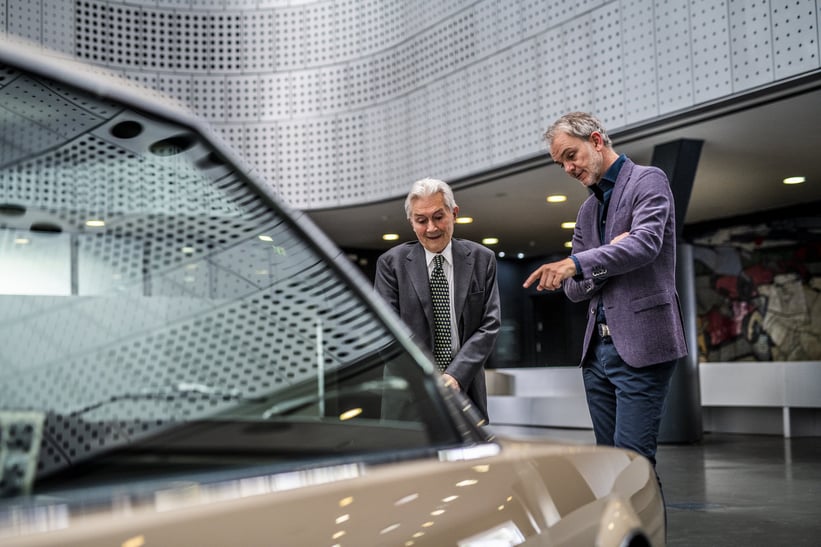

And while Marcello Gandini as a designer is still more interested in the future than in his own past, working on the BMW Garmisch for a second time was a joyful experience for him. “When I first heard that BMW wanted to recreate the BMW Garmisch, I was a bit surprised”, Marcello Gandini recalls of his first meeting with Adrian van Hooydonk. “Now I am very pleased that I was able to be part of this project and happy that BMW chose to recall this enjoyable past. Having seen the final car, it is hard for me to distinguish it from the original.”
Making its public debut during the Concorso d’Eleganza Villa d’Este 2019, the BMW Garmisch is taking its historical role as an archetype of the radical new style that was pioneered by Italian studios including Bertone in the late 1960s and early 1970s, and that is still an important reference point for contemporary car designers. “At the Concorso d’Eleganza Villa d’Este, we reflect on the past, but we also think about where we are going – and we can still learn a lot from Marcello Gandini’s design approach”, says Adrian van Hooydonk. “Even today, he is looking forward, he has ideas for new cars and likes to talk about the future. And his approach of trying to accomplish a lot with less is still quite modern today.”
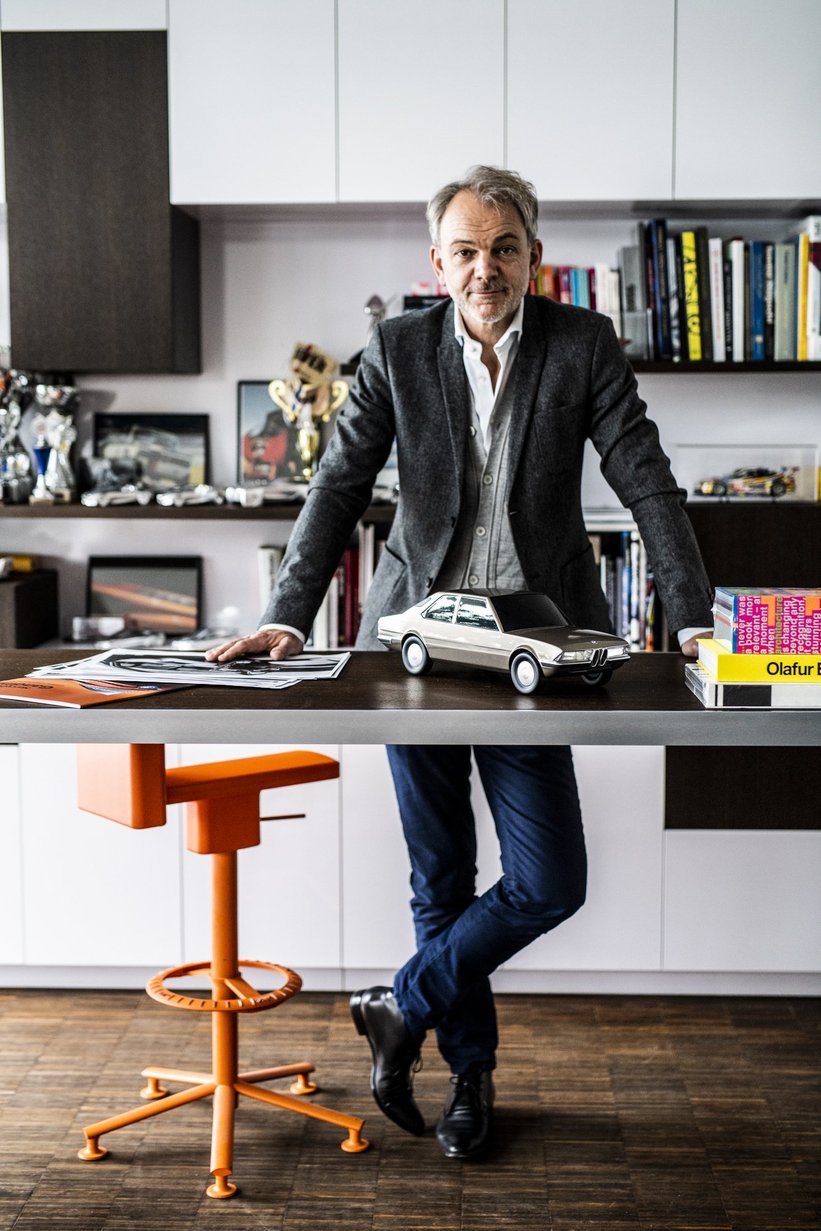

After the Concorso d’Eleganza Villa d’Este 2019, the BMW Garmisch will become a part of the BMW Museum’s collection, adding an exciting chapter to the company’s rich history and putting the spotlight on one of the most vibrant eras of car design. As a showcase for the successful conjunction of exciting engineering and visionary design, it also represents the culture of serendipity, inspiration and cultural exchange that is still a core value for the BMW Group on its way into the future of automotive design.












































































